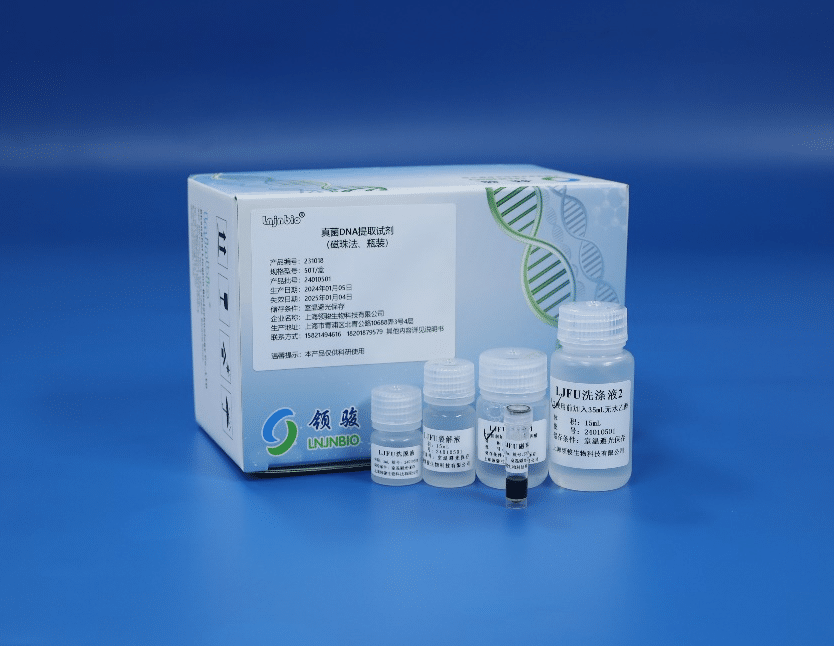Professional Manufacturer of Biomagnetic Beads

How much does temperature affect pH?
The influence of temperature on pH is a critical factor that affects both the measurement process and the intrinsic properties of the solution itself. This manifests primarily in the following aspects:
1. Effect of Temperature on pH Measurement (Instrumental Level)
Working Principle of pH Electrode: pH electrodes measure pH by detecting the potential difference across a glass membrane, which correlates with H⁺ concentration. This potential is temperature-dependent (following the Nernst equation).
Temperature Compensation:
Modern pH meters are equipped with temperature sensors to automatically compensate for the effect of temperature changes on the potential signal.
If temperature compensation is neglected, the measured pH value will be inaccurate when temperature changes (even if the actual H⁺ concentration of the solution remains unchanged).
Conclusion: Temperature compensation is mandatory when using a pH meter. Failure to compensate will result in readings deviating from the true value.
2. Temperature’s Real Effect on Solution pH (Chemical Level)
Temperature changes genuinely alter the chemical equilibria in water or buffer solutions, thereby changing their H⁺ concentration and pH value. This is the more fundamental effect:
a. Effect on Pure Water (or Neutral Solutions):
The ion product constant of water (Kw) increases significantly with rising temperature:
At 25°C: Kw = [H⁺][OH⁻] = 1.00 × 10⁻¹⁴ (pH = 7.00)
At 0°C: Kw ≈ 1.14 × 10⁻¹⁵ (pH ≈ 7.47)
At 50°C: Kw ≈ 5.47 × 10⁻¹⁴ (pH ≈ 6.63)
At 100°C: Kw ≈ 5.50 × 10⁻¹³ (pH ≈ 6.14)
Reason: The dissociation of water (H₂O ⇌ H⁺ + OH⁻) is an endothermic reaction. Increasing temperature shifts the equilibrium to the right, increasing both H⁺ and OH⁻ concentrations, but the solution remains neutral ([H⁺] = [OH⁻]).
Result: The pH value at the neutral point decreases as temperature increases. At 100°C, pure water has a pH ≈ 6.14, yet it is still neutral ([H⁺] = [OH⁻]).
b. Effect on Buffer Solutions:
The pH of a buffer solution is determined by the equilibrium constant (pKa) of its weak acid/conjugate base pair: pH = pKa + log₁₀([A⁻]/[HA]).
pKa Values Change with Temperature: The dissociation constant (Ka) of weak acids/bases is temperature-dependent because the dissociation process typically involves a heat change (endothermic or exothermic).
Example, Acetic acid (CH₃COOH) pKa:
0°C: pKa ≈ 4.76
25°C: pKa = 4.76
50°C: pKa ≈ 4.71 (pKa decreases slightly, ionization increases)
Phosphate buffer (pH~7.2) has a relatively small temperature coefficient (≈ -0.0028 pH/°C).
Tris buffer (pH~8.3) has a very large temperature coefficient (≈ -0.028 pH/°C). This means its pH value decreases by approximately 0.028 units per 1°C increase in temperature.
Result:
The magnitude of pH change with temperature differs for different buffer systems, depending on the ΔH° (enthalpy change of ionization) of their components.
When using buffers, it is essential to know their temperature coefficient and to calibrate and use them at the specific temperature. Precise temperature control is critical for temperature-sensitive buffers like Tris.
c. Effect on Non-buffered Solutions (e.g., Strong Acids/Strong Bases):
While strong acids/bases are fully dissociated, so the H⁺ or OH⁻ concentration is largely unaffected by temperature.
However, due to the temperature dependence of Kw, pH calculations must still account for the change in Kw:
Example, 0.1 M NaOH solution:
At 25°C: [OH⁻] = 0.1 M, [H⁺] = Kw / 0.1 = 10⁻¹³ M, pH = 13.00.
At 50°C: Kw ≈ 5.47 × 10⁻¹⁴, [H⁺] = 5.47 × 10⁻¹⁴ / 0.1 = 5.47 × 10⁻¹³ M, pH ≈ 12.26 (Although [OH⁻] is unchanged, the pH decreases due to the increase in Kw).
3. Practical Implications and Considerations
Importance of Calibration: pH meters must be calibrated at the measurement temperature. Calibrating at a higher or lower temperature using buffers standardized at 25°C will introduce significant errors (because the pH of the buffer itself changes with temperature).
Experimental Design: For pH-sensitive processes (e.g., enzymatic reactions, biomolecule binding/separation, material synthesis), strict temperature control is mandatory. The actual pH of the buffer system at that temperature must be known. For example:
When using Tris buffer for biological experiments at 37°C, its actual pH is about 0.34 units lower than its nominal value at 25°C ((37-25) * 0.028 ≈ 0.336).
pH Definition: The theoretical definition of pH (pH = -log₁₀ aₕ⁺, where aₕ⁺ is the H⁺ activity) inherently depends on temperature and ionic strength. The pH values of standard buffers are also defined at specific temperatures.
Biological Significance: Enzyme activity, protein conformation, membrane permeability, etc., in biological systems are highly pH-dependent. Real pH shifts caused by temperature changes directly affect these biological processes, beyond just the measurement reading.
Summary
Temperature affects pH in two ways: It influences the electrode measurement signal (requiring compensation) and alters the solution’s own ionization equilibria (genuinely changing H⁺ concentration).
The pH of pure water (the neutral point) decreases with increasing temperature.
The pH of buffer solutions changes with temperature to an extent determined by their composition (the temperature coefficient of pKa).
Key Operations:
Always use the pH meter’s temperature compensation function.
Ensure buffers and samples are at the same temperature during both calibration and measurement.
Know the temperature coefficient of your buffer and adjust the expected pH value if used at non-standard temperatures.
Precise temperature control is a prerequisite for reliable results in pH-sensitive experiments.
Understanding the influence of temperature on pH is crucial for achieving precise pH control and measurement in chemistry, biology, environmental science, and industrial processes.
Supplier
Shanghai Lingjun Biotechnology Co., Ltd. was established in 2016 which is a professional manufacturer of biomagnetic materials and nucleic acid extraction reagents.
We have rich experience in nucleic acid extraction and purification, protein purification, cell separation, chemiluminescence, and other technical fields.
Our products are widely used in many fields, such as medical testing, genetic testing, university research, genetic breeding, and so on. We not only provide products but also can undertake OEM, ODM, and other needs. If you have a related need, please feel free to contact us .






